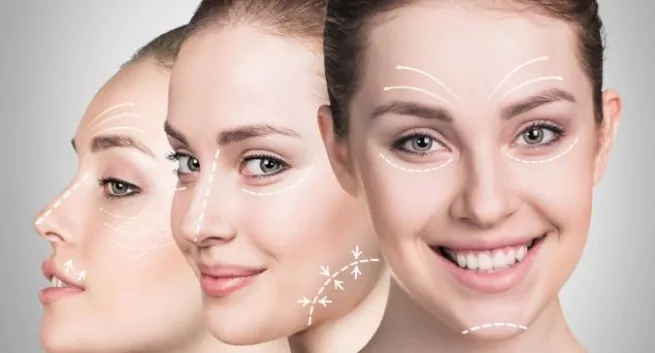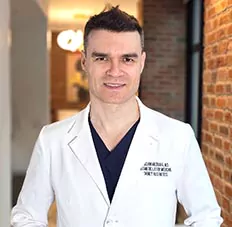Cosmetic surgery has undergone a significant transformation, shedding its past associations with botched outcomes and outdated methods. Thanks to advancements in medical technology, today’s cosmetic treatments are safer and less invasive. Clinics like Skinly Aesthetics are at the forefront of this revolution, offering innovative solutions that deliver impressive results without the need for surgery. Dr. Schwarzburg provides expert insights on how these modern treatments compare to their traditional surgical counterparts.
Lip Enhancements: Evolution from Surgery to Fillers
Lip enhancements have a long history, starting with fat grafting or lipofilling in the early 1900s. This surgical method involved harvesting fat from one part of the body and re-injecting it into the lips, often leading to uneven and lumpy results that were difficult to reverse.
Today, hyaluronic acid-based lip fillers like Juvederm have revolutionized lip enhancements. The fillers are safer, offering natural-looking results with minimal risk. Hyaluronic acid is naturally produced by the body, making rejection unlikely, and its effects can be reversed with hyaluronidase if necessary. However, it is essential to have these fillers administered by a skilled professional to avoid complications associated with DIY methods.
Butt Enhancements: From BBL and Implants to Liquid Butt Lifts
Butt enhancements have surged in popularity, driven by social media and celebrity culture. The Brazilian Butt Lift (BBL) is a prominent surgical method that involves transferring fat from areas like the abdomen, thighs, and arms to the buttocks. Despite its popularity, the BBL carries significant risks, including a 3% mortality rate.
Another surgical option is silicone butt implants, which involve inserting silicone prosthetics into the buttocks to enhance volume and shape. While effective, these implants come with their own set of risks, such as infection, implant displacement, and fracture, as well as prolonged recovery times.
For those seeking safer, non-surgical alternatives, options like Sculptra, hyaluronic acid, and Radiesse liquid butt lifts are available. These injectable fillers stimulate collagen production, increasing buttock volume with fewer risks. Sculptra and Radiesse take a few months to show results, while hyaluronic acid fillers provide immediate volume expansion. These non-surgical options offer a less invasive approach to achieving the desired buttock enhancement without the significant risks associated with surgery.
The New Age of Facelifts: From Surgery to Minimally Invasive Treatments
Traditional surgical facelifts involve incisions along the hairline, repositioning of underlying tissue, and removal of excess skin. While effective, this method carries risks like scarring, infection, nerve damage, and permanent asymmetry.
For those seeking less invasive options, PDO thread lifts offer a viable alternative. These lifts use barbed threads to pull and hold the skin in place, providing a lifted appearance with shorter recovery times. Agnes RF and Attiva RF technologies also offer minimally invasive facelifts by using controlled tissue coagulation to tighten the skin.
Liquid facelifts, using neurotoxins (e.g., Botox) and dermal fillers, provide another non-surgical option. These treatments reduce wrinkles and add volume to areas such as the forehead, under eyes, cheeks, and jawline. Additionally, Ultherapy uses microfocused ultrasound energy to stimulate collagen production, tightening the skin without incisions.
Sculpting the Face: Surgical vs. Injectable Options
Surgical rhinoplasties are a popular choice for correcting deviated septums and reshaping the nose. This procedure, while effective, involves invasive incisions and the reshaping of bone and cartilage. However, it carries risks such as nasal scarring, infections, and the potential for botched outcomes.
Injectable rhinoplasties offer a minimally invasive alternative for those seeking minor adjustments. Using hyaluronic acid-based fillers, this method can contour the nose and even out bumps with reversible results.
For jaw and chin shaping, surgical implants pose risks like infection and migration. Dermal fillers provide a safer option for minor adjustments, with results lasting from six months to two years.
Innovative Fat Reduction Techniques: Surgical and Non-Surgical Options
Liposuction is a widely used surgical method for removing unwanted fat but requires significant recovery time.
Cryolipolysis, known by brand name CoolSculpting offers a non-invasive alternative by freezing fat cells, which the body then metabolizes. This method requires minimal downtime, with results visible within 1-2 months.
Kybella, an injectable solution made of deoxycholic acid, targets small fat pockets like double chins. It breaks down fat cells, offering a non-invasive alternative to liposuction.
GLP-1 agonists, such as Semaglutide and Tirzepatide, have emerged as effective medical weight-loss options. These medications reduce appetite and stabilize insulin levels, leading to significant weight loss with few or no side effects.
Wrapping Up: Evolution of Non-Surgical Cosmetic Solutions
The field of medical cosmetic treatments has made remarkable strides, offering numerous non-surgical alternatives to traditional procedures. These modern advancements provide similar results with significantly reduced risks and downtime.
While some cases still require surgical interventions, innovations at clinics like Skinly Aesthetics offer effective, minimally invasive enhancements.
By choosing an experienced provider like Dr. Schwarzburg, you can ensure optimal outcomes and safety. Schedule a consultation to explore these cutting-edge options and find the best treatment for your cosmetic needs.
 info@skinlyaesthetics.com
info@skinlyaesthetics.com  212-774-4264
212-774-4264 

